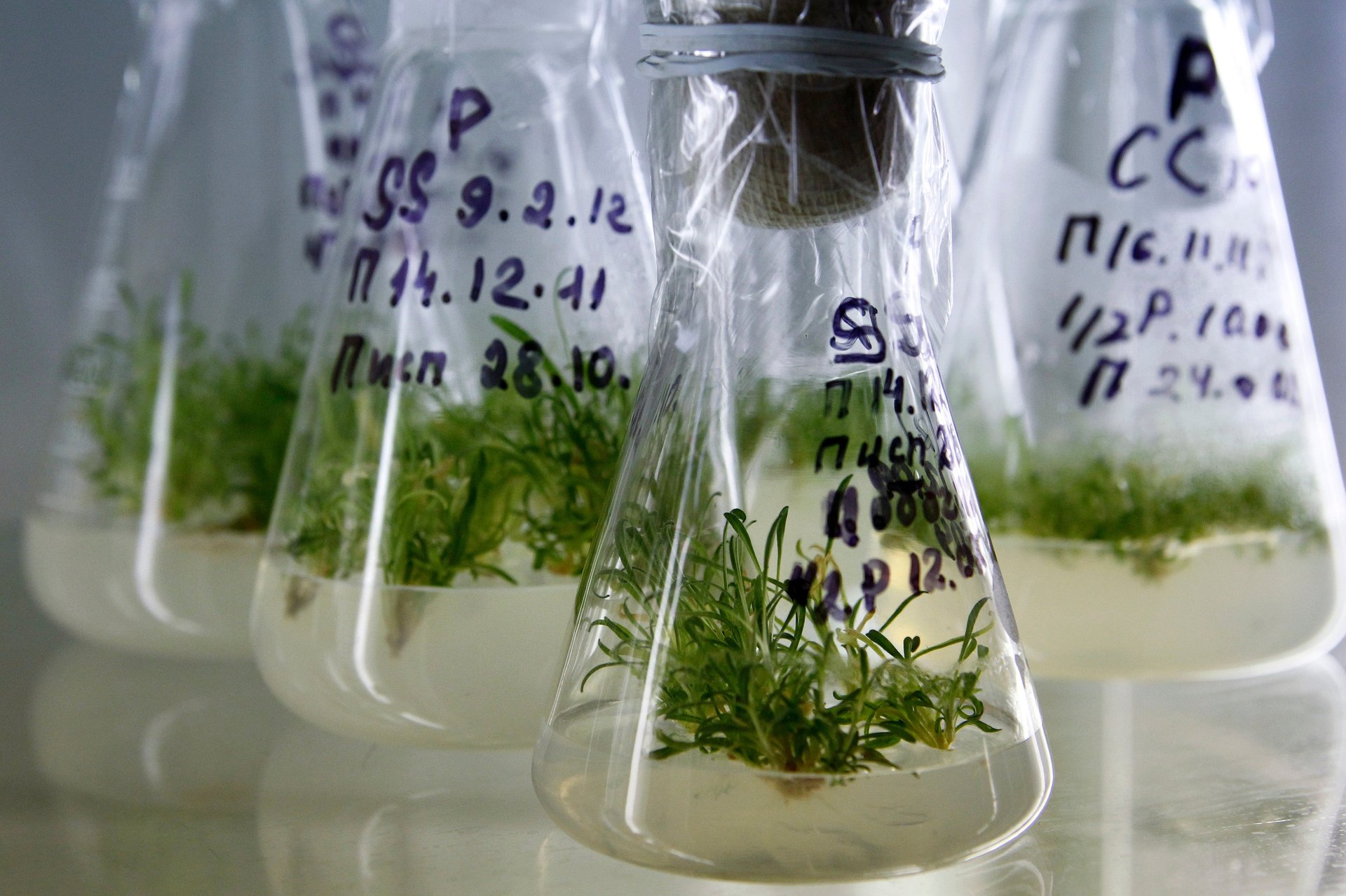The biggest hurdle genetically engineered food faces isn’t science—it’s us
This story is part of What Happens Next, our complete guide to understanding the future. Read more predictions about the Future of Food.


This story is part of What Happens Next, our complete guide to understanding the future. Read more predictions about the Future of Food.
Today, virtually everything we eat is produced from seeds that have been genetically altered in some manner. If we’re going to feed the growing population without further destroying the environment, then we’re going to have to get comfortable with the idea of eating modified crops.
By the year 2100, the Earth’s population is expected to increase to more than 11.2 billion from the current 7.6 billion. What is the best way to produce enough food to feed all these people? If we continue with current farming practices, vast amounts of wilderness will be lost, millions of birds and billions of insects will die, farm workers will be at increased risk for disease, and the public will spend billions of dollars as a consequence of environmental degradation. But there is a way we can resolve the need for increased food production with the desire to minimize its impact.
For 10,000 years, we have altered the genetic makeup of our crops, transforming their shape, texture, flavor and yield. The ancient ancestor of our familiar yellow carrot, for example, was likely a purple, bitter, and woody root. Hybridization, grafting or induced random mutation through radiation or chemical treatments gave rise to many of our crops today. These early approaches were somewhat crude, resulting in new varieties through a combination of trial and error, and without knowledge of the precise function of the genes that were being transferred.
Modern genetic methods introduce more precise changes to genes. These include genetic engineering (soon to be labeled as “bioengineered”), which allows the introduction of genes from one species into another; marker-assisted breeding, which facilitates introduction of genes using molecular techniques; and genome editing, which allows for targeted insertions, deletions, or replacement of DNA sequences. These approaches have led to the creation of rice plants that can withstand floods, insect-resistant crops that don’t have to be treated with chemical insecticides, and dairy cows without horns. Genetic engineering has also been used to create life-saving drugs (like insulin) and enzymes for cheeses. In fact, approximately 90% of US cheeses are made with genetically engineered enzymes. If you like your cheeses, you’re already eating ingredients from bioengineered organisms.
Genetic engineering can reduce both crop loss and the need for harmful chemicals entering the food system. For example, the introduction of the Bacillus thuringiensis “Bt” gene into crops such as eggplant, maize, and cotton has led to dramatic reduction in chemical insecticide sprays worldwide and enhanced insect biodiversity. The Bt insecticide is highly specific to caterpillar pests, but is nontoxic to birds, fish, and humans, which is why this pesticide is a favorite of organic farmers. (In fact, it is less toxic than table salt.)
Genetic engineering is also being used to alleviate the effects of vitamin A deficiency (VAD), which is the main cause of preventable blindness in children and the culprit in 250,000 childhood deaths each year. The engineered rice grain, which is in the final stages of field testing in Bangladesh, produces beta carotene, which is the nutrient found in carrots and other foods that the human body converts to vitamin A. Planting and consumption of this “golden rice” is expected to save thousands of lives at a fraction of the cost of current vitamin A supplementation programs.

As the climate changes, the development of crops that are resilient to extreme conditions (such as heat, drought, and flooding) will be increasingly important. For example, rice grows well in standing water, but most varieties will die if they’re submerged for more than three days. In south and southeast Asia, where many farmers and their families live on less than $2 a day, 4 million tons of rice—enough to feed 30 million people—is lost every year to flooding. Using a combination of sequencing, genetic engineering, and marker-assisted breeding, our team developed rice varieties that are tolerant of 18 days of flooding. Last year, 6 million farmers grew this “Sub1” rice.
When most of our food is already genetically altered in some manner, why the ruckus about “GMOs”? The term itself has no precise scientific definition and means different things to different people. To some it raises fears of a future where scientists tinker with our food supply without concern for our health. Other consumers do not want to buy food that is derived from GMOs because they want to avoid seeds produced by large corporations, such as Monsanto. But it is hard to avoid seed companies, whether the food is bioengineered or not. For example, about 30% of the seed planted by organic and conventional farmers for some fruits and vegetables, such as cucumbers, is purchased from Monsanto.
The biggest hurdle that genetically engineered food faces isn’t science, but us. After decades of careful study and rigorous peer review by thousands of independent scientists, every major scientific organization in the world has concluded that the genetically engineered crops currently on the market are safe to eat, and that the process of genetic engineering is no more risky than older methods of genetic alteration. These are precisely the same organizations that most of us trust when it comes to other important scientific issues such as global climate change and the safety of vaccines.
To advance sustainable agriculture, we must ask what most enhances local food security and can provide safe, abundant, and nutritious food to consumers. We must ask if rural communities can thrive, if environmental damage can be reduced, if farmers can make a profit, and if consumers can afford the food. These are much more important issues to solve than worrying about genes in our food.
This story is part of What Happens Next, our complete guide to understanding the future. Read more predictions about the Future of Food.